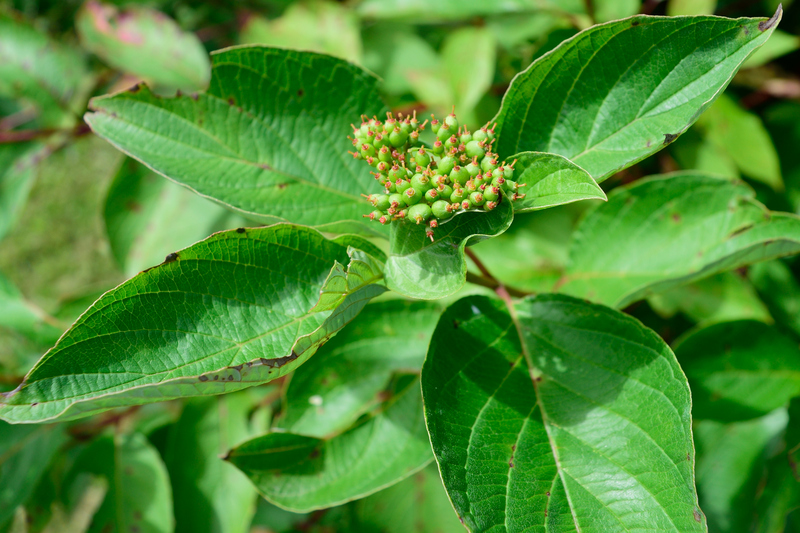Lawn Aeration: Key Benefits
Posted on 25/06/2025
Maintaining a lush and healthy lawn requires more than just regular mowing and watering. One crucial practice that often goes overlooked is lawn aeration. Aerating your lawn can significantly improve its overall health and appearance, ensuring that your grass remains green, vibrant, and resilient. In this article, we will delve into the key benefits of lawn aeration and why it should be a critical component of your lawn care regimen.
Understanding Lawn Aeration
Lawn aeration involves perforating the soil with small holes to allow air, water, and nutrients to penetrate the grass roots more effectively. This practice helps reduce soil compaction, which can hinder root growth and impede the movement of essential elements within the soil. Aeration can be performed using manual or powered tools, and is typically recommended during the growing season when the grass can recover quickly.

Improved Soil Structure
One of the most significant benefits of lawn aeration is the improvement of soil structure. Compacted soil can become dense and hard, making it difficult for grass roots to establish themselves deeply. By aerating your lawn, you create spaces where soil particles can rearrange and settle more loosely, allowing roots to grow deeper and stronger. This leads to a more robust and resilient lawn that can better withstand environmental stresses.
Enhanced Nutrient Uptake
Aeration plays a crucial role in enhancing the uptake of nutrients by grass roots. In compacted soil, essential nutrients such as nitrogen, phosphorus, and potassium may struggle to reach the root zone. By creating pathways for nutrients to penetrate more easily, aeration ensures that your grass can access the vital elements it needs for healthy growth. This results in a greener, more vibrant lawn with improved overall health.
Efficient Water Absorption
Water is essential for maintaining a healthy lawn, but compacted soil can hinder its absorption. When soil is compacted, water tends to pool on the surface rather than seeping down to the roots where it's needed most. Lawn aeration alleviates this issue by creating channels through which water can flow more freely. As a result, your lawn becomes more drought-resistant, as the roots can access water more efficiently and retain it for longer periods.
Reduced Thatch Buildup
Thatch is a layer of dead grass, roots, and other organic matter that accumulates on the surface of the soil. While a minimal amount of thatch can be beneficial, excessive thatch can create a barrier that prevents water, air, and nutrients from reaching the roots. Lawn aeration helps break down this thatch layer, allowing for better movement of essential elements into the soil. This promotes healthier grass growth and reduces the risk of disease and pest infestations.
Enhanced Oxygen Exchange
Proper oxygen exchange is vital for the health of your lawn's root system. Compacted soil restricts the flow of oxygen to the roots, limiting their ability to respire and function effectively. Aeration improves oxygen exchange by creating open spaces where air can circulate freely. This enables roots to breathe better and enhances their metabolic processes, ultimately leading to stronger and more resilient grass.
Increased Microbial Activity
Healthy soil is teeming with beneficial microorganisms that play a crucial role in breaking down organic matter and cycling nutrients. Compact soil can create an inhospitable environment for these microorganisms, reducing their activity and overall soil health. Aeration fosters a more favorable environment for microbial life by improving soil structure and creating spaces where these organisms can thrive. This, in turn, contributes to richer, more fertile soil that supports robust grass growth.
Prevention of Lawn Problems
Regular lawn aeration can help prevent a host of common lawn problems. By alleviating soil compaction, aeration reduces the risk of waterlogging, a condition that can lead to root rot and other fungal diseases. Improved nutrient uptake and oxygen exchange also enhance the lawn's ability to resist pests and diseases. Additionally, a well-aerated lawn is less likely to develop thin, patchy areas, ensuring an even and appealing appearance.
The Best Time for Lawn Aeration
The timing of lawn aeration is crucial for achieving the best results. The optimal time varies depending on the type of grass you have. For cool-season grasses, such as Kentucky bluegrass and fescue, aeration is best done in early spring or early fall when the grass is actively growing. Warm-season grasses, such as Bermuda and zoysia, benefit from aeration in late spring or early summer. Performing aeration during these periods ensures that the grass has ample time to recover and thrive.

Types of Aeration Tools
Several types of aeration tools are available, each with its own advantages:
- Core Aerators: Core aerators remove small plugs of soil from the lawn, creating holes that allow for better air, water, and nutrient penetration. These plugs are left on the surface to decompose and enrich the soil.
- Spike Aerators: Spike aerators use solid tines to puncture the soil and create holes. While they are effective in alleviating surface compaction, they do not remove soil plugs like core aerators.
- Liquid Aerators: Liquid aerators use chemical compounds to break down compacted soil. They can be a convenient option, but their effectiveness may vary depending on soil conditions.
Choosing the right tool depends on your lawn's specific needs and the severity of compaction. Core aerators are generally considered the most effective for addressing deep-seated compaction and promoting overall lawn health.
Conclusion
Lawn aeration is a vital practice that offers numerous benefits for maintaining a healthy and vibrant lawn. By improving soil structure, enhancing nutrient uptake, promoting efficient water absorption, reducing thatch buildup, and facilitating oxygen exchange, aeration ensures that your grass can thrive and withstand environmental stresses. Regular aeration, performed during the appropriate season, can prevent common lawn problems and contribute to a lush, green, and beautiful landscape. Whether you're a seasoned gardener or a novice lawn enthusiast, incorporating aeration into your lawn care routine will undoubtedly yield rewarding results.






 Certified and experienced landscapers
Certified and experienced landscapers



 Get a Quote
Get a Quote